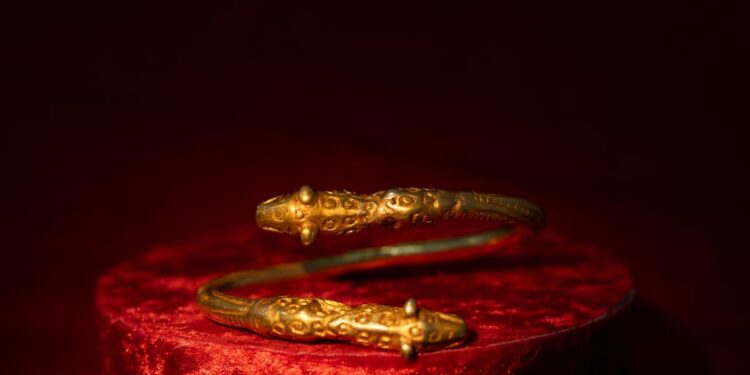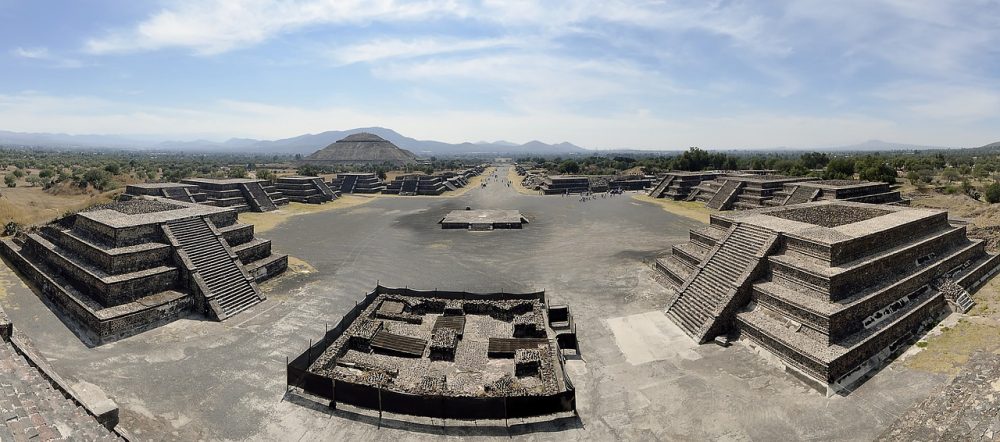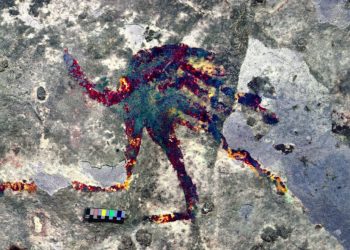Archaeologists in Kazakhstan have uncovered an extraordinary 2,400-year-old gold treasure, leaving experts stunned and rewriting what was previously known about the Sarmatian civilization. This significant find, buried within three ancient mounds in the Atyrau region near the Caspian Sea, includes finely crafted gold jewelry, weapons, and ceremonial artifacts.
For years, scholars considered this region to be a peripheral zone of the Sarmatian world. However, these discoveries suggest that Atyrau may have been a central hub of power and influence for this enigmatic nomadic culture.
A Hoard of Gold and Ancient Artifacts
The excavation at Karabau-2, one of the burial sites, has so far revealed over 1,000 artifacts, with around 100 made of pure gold. The designs feature distinctive “animalistic” motifs, depicting leopards, wild boars, and tigers—creatures that once roamed the vast Eurasian steppes.
Some of the most astonishing finds include:
- Gold-adorned weapons, possibly belonging to elite warriors.
- Elaborate gold jewelry, likely worn by high-ranking Sarmatians.
- Rare black “touchstones” with gold handles, possibly used to test metal purity.
- Two well-preserved wooden bowls are an unusual find since organic materials rarely survive for millennia.
The burial mound itself rises 3 meters (10 feet) high and spans 70 meters (230 feet) in diameter. Archaeologists have confirmed that at least nine individuals were buried here, with only two graves showing signs of looting.
Who Were the Sarmatians?
The Sarmatians were nomadic warriors who dominated the steppes between Eastern Europe and Central Asia from the 5th century BCE to the 4th century CE. Closely linked to the Scythian cultural sphere, they were first documented in Persian historical records and were renowned for their horsemanship, advanced metalwork, and fierce warrior traditions.
Later, as the Western Roman Empire collapsed, Sarmatians formed alliances with Gothic and Germanic tribes. Some even served as elite cavalry in the Byzantine Empire, bringing their military expertise into the heart of Eastern Rome.
A Burial Site for Sarmatian Nobility?
The Karabau-2 discovery wasn’t the only major find. Excavations at two nearby burial mounds uncovered:
- Iron and bronze weapons, possibly indicating warrior burials.
- Silver pictograms of a saiga antelope and a wolf, reveal cultural symbolism.
- A 370-gram (13-ounce) gold bracelet, suggests that high-status individuals were buried here.
Experts now believe that these burial sites were reserved for Sarmatian elites—possibly even royalty. The sheer wealth and craftsmanship of the artifacts indicate a sophisticated society with strong political and military structures.
This discovery challenges previous assumptions about the Sarmatians’ geographic reach and cultural influence. If Atyrau was a major Sarmatian stronghold, what other secrets could still be buried beneath Kazakhstan’s steppes? Ongoing research could provide even more insights into the daily lives, trade networks, and power structures of this once-dominant nomadic civilization.











